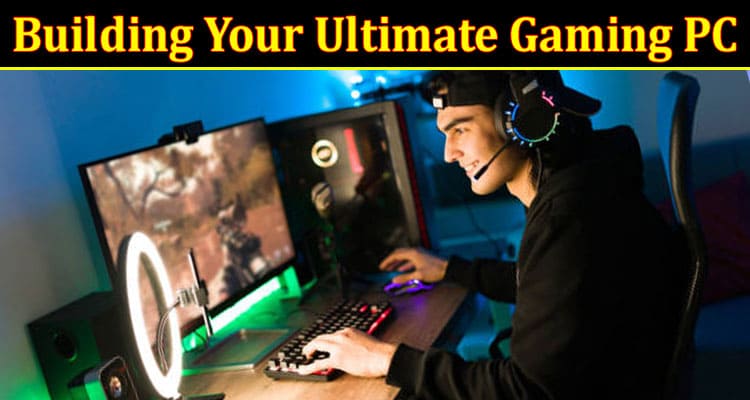As technology continues to advance, gaming has achieved unprecedented levels of immersion and excitement. For avid gamers aiming to elevate their experience, building a gaming PC can offer both thrills and rewards.
This comprehensive guide will take you through crafting your ultimate gaming setup, even if you’re a newcomer to PC building.
Define Your Goals
Before delving into the intricate details of assembling your gaming PC, it is crucial to establish your objectives. What types of games do you play? Are you interested in high-resolution graphics, speedy performance, or both? Determining your gaming preferences will help you select the right components once you buy a gaming pc.
Choose the Right Components
At the core of every gaming PC are its components. Below, you’ll find a detailed analysis of the necessary elements:
Central Processing Unit (CPU)
This part is the brain of your PC. For gaming, a multi-core CPU with high clock speeds is recommended.
Graphics Processing Unit (GPU)
The GPU is responsible for rendering stunning visuals. Invest in a powerful GPU for smooth gameplay at high resolutions.
Motherboard
This part connects all components. Make sure the motherboard is compatible with your CPU and other parts.
Memory (RAM)
Opt for at least 8GB of RAM, although 16GB or more is preferable for modern games.
Storage
A solid-state drive (SSD) will provide fast load times, while a larger hard disk drive (HDD) can store your games and files.
Power Supply Unit (PSU)
Choose a PSU that can handle your components’ power requirements.
Cooling System
An effective cooling solution prevents overheating during intense gaming sessions.
Assembly
Assembling your gaming PC might seem daunting, but it’s a manageable task with patience and attention to detail. You can follow these steps to assemble your PC easily.
Prepare Your Workspace
Set a clear, clean, and well-lit area to work in. Use an anti-static wristband to prevent damaging sensitive components with static electricity.
Mount the CPU and Cooler
Carefully install the CPU into the motherboard’s socket, then attach the cooling solution following the manufacturer’s instructions.
Install RAM
Gently insert the RAM sticks into their designated slots on the motherboard.
Mount the Motherboard
Position the motherboard within the case and fasten it using screws. Proceed to link the required cables afterwards.
Install GPU
Slot the GPU into its designated PCIe slot on the motherboard and secure it. Connect power cables from the PSU.
Connect Storage Drives
Attach the SSD and HDD to the motherboard using SATA cables and mount them in the case.
PSU Installation
Mount the PSU in the case and connect the power cables to the motherboard, GPU, and drives.
Cable Management
Neatly route cables to improve airflow and aesthetics. This step enhances cooling and makes future upgrades easier.
Software Setup
After properly setting up your hardware, it’s time to install the operating system (OS) and necessary drivers. Here’s how you can do it:
OS Installation
Use a USB drive to install your chosen OS (e.g., Windows). You only need to follow the on-screen instructions, and you’re good to go.
Driver Installation
Install drivers for your GPU, motherboard, and other components from their respective manufacturer websites.
Software and Games
Download and install essential software, such as gaming platforms and utilities. Then, transfer your games to your new PC.
Upgrade Your Gaming Experience
Building your ultimate gaming PC is a thrilling journey that allows you to tailor your rig to your gaming preferences. Remember, each step in this guide requires attention to detail, but the satisfaction of seeing your creation come to life is well worth the effort. So gear up, get building, and prepare to immerse yourself in gaming like never before.

